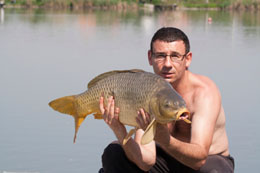Girls Fastpicth Sac. Bunting Technique
Question
I am coaching a girls fastpitch travel team at the 12U level. I have an assistant coach that has a couple of more years experience than me. I was teaching the girls the art of the Sacrifice Bunt.
I was teaching them to square (both feet facing pitcher), knees slightly bent, elbows down, right hand in a closed fist with thumb wrapped on the bat. The bat is to be level across the plate.
hitting for a base hit, but not for sacrficing. He also explained to me that the girls were more apt to get hit by a pitch in this stance.
In my experience I feel that this is the best control of getting the ball into play, which is what I am trying to accomplish.
He explained to me that this was a baseball bunt and shouldn't be used in Softball, however the bunting technique he gave me was as follows.
Girl Pivots the back foot hand slides down with fingers wrapped around the bat, and move the bat up and down in the strike zone. I feel that this may be good for slapping a bunt. He also told me that all the colleges teach this now. I tend to disagree with this technique from a sacrifice bunt only persepective.
I noticed a couple of things with this technique:
Girl was off balance
Batter had hard time getting a pitch unless it was right over the plate
Ball was being popped up alot
With my technique wherever the ball was in the zone they were never off balance and hardly ever popped it up.
Can you help me teach the right technique for me and my coach and give me an answer that will suffice us both.
Answer
Hello Robert
Yes the squire around method isn't used in softball much however some girls are more comfortable with the squire around compared to the pivot - this is especially with the younger girls. I've seen both methods used successfully and at all levels of play. For 12U girls the squire around may offer more control (and confidence) to many of the players.
It is true the most college coaches teach (or prefer) the rotating (pivoting) the feet method for both the surprise bunt and sacrifice bunt. The batter simply pivots later on the surprise bunt. The rotation method gives the batter more options. For example if the defense is overly aggressive and the corners start crashing in, the batter is still open enough to cock the wrists and slap the ball past them.
With the pivot method the batter will stand in a normal batting position but with an open stance. An open stance will help enhance balance and control when she pivots. Ideally she will pivot right as the pitcher is about to release the ball on a sacrifice bunt. Once she pivots she should have the bat out front with the arms, waist, and knees slightly bent and hands in the position you describe and also out in front. The bat head can be angled up slightly or be level. I don't recommend moving the bat up and down in the strike zone - that makes it harder for the batter to contact the ball - so doing that doesn't make since at all ?why make it harder for the batter?
An important point for either the squire around or rotation bunt is that the bat should start at the top of the strike zone especially for the younger player. This way you can tell them anything above the bat is a ball and everything else below the bat is fair game. Basically staying on top of the strike zone helps the batter stay on top of the ball.
The whole idea of the pivot is to be able to bunt, push, or slap from the same position as the defense dictates. The straight squire around sacrifice bunt is rare in fastpitch softball mainly because in the higher skill levels the defenses are so aggressive they can easily recognize the play and take away.
At this age teach both methods and let the player choose which is most comfortable to them (that is what I did).
softball and college
Softball Hitting and Fielding Performance Goals


